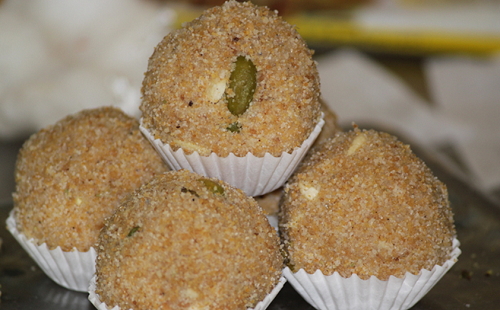SalasarBalaji in Rajasthan: Cuisine
(Created page with "{| class="wikitable" |- |colspan="0"|<div style="font-size:100%"> This is a collection of articles archived for the excellence of their content.<br/>You can help by converting...") |
|||
| Line 21: | Line 21: | ||
[[File: Rajistan.png||frame|500px]] | [[File: Rajistan.png||frame|500px]] | ||
| − | |||
| − | |||
Initially food was only cooked at the temple kitchen, but due to the increase in the number of devotees, the process is now being outsourced to numerous independent shopkeepers and caterers. Delicious delicacies, such as Dal BaatiChurma, Boondi, Peda and ChurmaLaddu, are made for Savamani. First offered to the deity of the pilgrimage, the food is then distributed among the devotees. This fare is also a staple of family celebrations – distributed amongst relatives, neighbours or the needy. | Initially food was only cooked at the temple kitchen, but due to the increase in the number of devotees, the process is now being outsourced to numerous independent shopkeepers and caterers. Delicious delicacies, such as Dal BaatiChurma, Boondi, Peda and ChurmaLaddu, are made for Savamani. First offered to the deity of the pilgrimage, the food is then distributed among the devotees. This fare is also a staple of family celebrations – distributed amongst relatives, neighbours or the needy. | ||
Latest revision as of 12:10, 9 March 2014
This is a collection of articles archived for the excellence of their content. Readers will be able to edit existing articles and post new articles directly |
[edit] SalasarBalaji in Rajasthan: Cuisine
Dedicated to Lord Hanumanm, the Indian god of monkeys, SalasarBalaji houses the idol in a very different form. A moustache and beard on a round face make this idol unique amongst all other idols of Lord Hanuman across the world. Here, the offering is termed as Savamani, which is derived from the word ‘Sava’ meaning one and quarter in Hindi and ‘Mun’ meaning a unit weighing roughly 40 kgs. This one-and-a-quarter plus 40 kgs strangely adds up to 50 kgs. The significance – devotees need to cook up to 50 kgs of food daily at the temple.
Initially food was only cooked at the temple kitchen, but due to the increase in the number of devotees, the process is now being outsourced to numerous independent shopkeepers and caterers. Delicious delicacies, such as Dal BaatiChurma, Boondi, Peda and ChurmaLaddu, are made for Savamani. First offered to the deity of the pilgrimage, the food is then distributed among the devotees. This fare is also a staple of family celebrations – distributed amongst relatives, neighbours or the needy.
